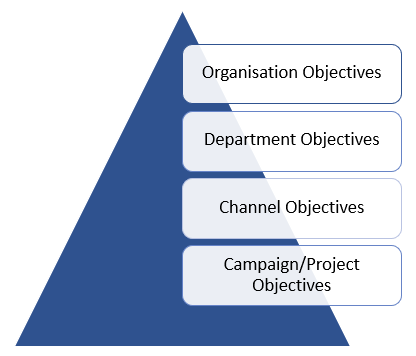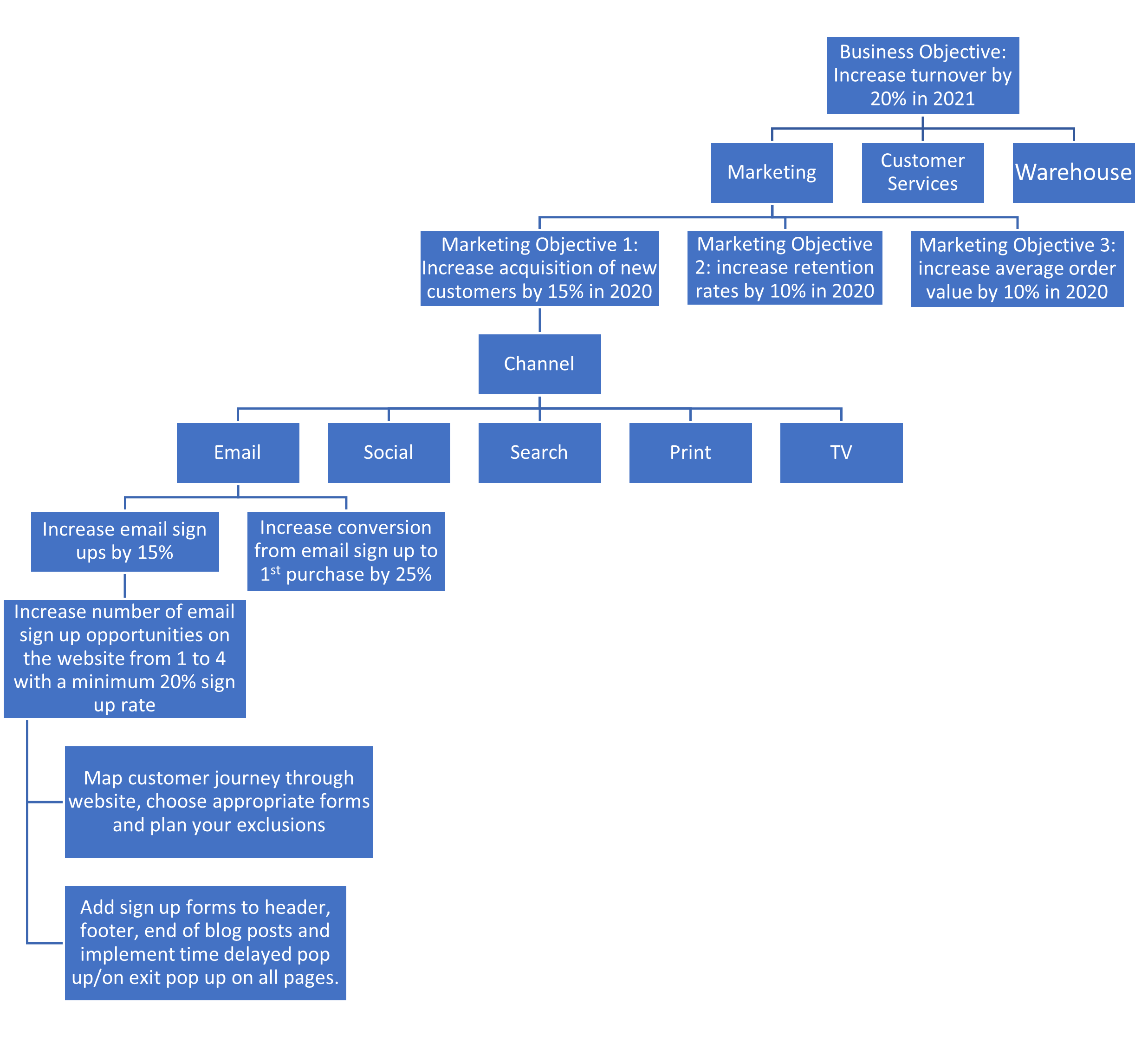Know where you're coming from to know where you want to go
So often I speak to companies that are working away in earnest at their email strategy, with the aim of meeting targets set by line managers and directors higher up in the company, without truly understanding why they are doing it.
Even worse, they’re tasked with ‘improving open and click rates’ generally for example, without a solid steer as to what the end result is that they’re trying to achieve. Do you want to increase brand awareness, generate more sales, push more leads to your sales team, or any number of other possible end results beyond the email?
Sound familiar?!
So often, what seems like something really simple, is often something that’s overlooked, or if it is communicated, it’s quickly overtaken by the day to day rig moral of the job.
In many cases, this is heightened by disparate team set ups, lack of internal communication and many other factors, that can ultimately undermine the success of your email campaigns and the impact that you can have on both your company’s results and your own career progression.
Planning from the top down
Knowing what you want to achieve, what your business is truly aiming for as an end result, is critical to your ongoing success.
Planning from the top down allows you to:
- Clearly see how each individual task you carry out in your day to day job, strategy you create, and test you implement, helps you to get to an end goal
- Allocate resources and budgets appropriately
- Analyse results based on your objectives to appropriately measure success
- Prioritise projects based on need and potential impact
And it all starts from the very top of your organisation.
Let’s look at how this works.
In any business, there will be a hierarchy of objectives:

1. Organisation Objectives
At the very top of your pyramid, and driving every single action in the company whether you realise it or not (and if you don’t then you aren’t able to properly optimise your strategy to reach it!), are the organisation-wide objectives, put in place by the management team, board or owner.
This is the overarching goal for the whole organisation for the next year, 3 years, 5 years etc.
Examples here could include ‘increase turnover by 20% in 2021’ or ‘break into the UK market with a 5% market share by the end of year 2021’.
2. Department Objectives
This top level now needs to be disseminated down throughout the different areas of the organisation; customer service, sales, warehouse, marketing etc.
And each department will have their own way of helping to meet it.
Here are some simple examples based around the ‘increase turnover’ goal:
Warehouse: increase packing speed by 5% (because by packing items faster, the warehouse will be able to ship more packages in the same amount of time, increasing revenue in the time period and customer satisfaction).
Customer services: increase satisfaction rate from calls from 95% to 98% (because by doing so, customers will be more likely to return and buy again)
Marketing: increase repeat purchase rate by 10% (because if you can increase the frequency at which people buy again, turnover will increase)
Each department may have multiple goals that will help them meet the organisations overarching goal. So, Marketing may also have another goal of ‘increase the number of new customers by 10%’ or ‘increase average order value by 10%’.
Each of these Department Objectives start to dig into how to achieve the Organisational Objectives…
What is it that you need to do in your business in order to generate that increased turnover?
3. Channel Objectives
Let’s continue to focus in on the Marketing department. Once you know your main objective(s), you can start whittling these down to which channels will best help you meet those goals.
For example, to meet the new customer acquisition goal, you might select email as one of your main channels. To help generate new customers here, you could consider these two channel objectives:
- Increase email sign up rate by 15%
- Increase conversion from email sign up to 1st purchase by 25%
Now you can see we’re starting to hone in on the specific areas for this channel that need to be increased, set a specific target for each to quantify it, and we can now work towards meeting that objective knowing it will lead us to our higher objectives.
4. Campaign / Project Objectives
Next we can start to devise our strategy to meet those objectives and then set our specific campaign/project objectives and KPIs for each of those activities in order to measure success.
For example, to meet the objective of increasing sign up rate by 15%, you could consider the following objective (again, you may have multiple):
- Increase number of email sign up opportunities on the website from 1 to 4 with a minimum 20% sign up rate
- Map customer journey through website to ascertain the most appropriate sign up form type for page types and trigger timings (where required). Decide on exclusions.
- Add sign up forms to header, footer, end of blog posts, and implement time delayed pop up/on exit pop up on all pages.
- Map customer journey through website to ascertain the most appropriate sign up form type for page types and trigger timings (where required). Decide on exclusions.
By planning in this way, you’re always working back to your main company objective and will have a clear strategic and tactical plan for the year ahead created:
 Although this flow is seemingly simple, I often see marketers that don’t have a full view from the top to the bottom of what they’re actually trying to achieve. This means they struggle to know where to prioritise resources for maximum impact, and implement campaigns and changes that will have a higher-level impact and drive results.
Although this flow is seemingly simple, I often see marketers that don’t have a full view from the top to the bottom of what they’re actually trying to achieve. This means they struggle to know where to prioritise resources for maximum impact, and implement campaigns and changes that will have a higher-level impact and drive results.
So, while you’re thinking of your 2021 plans, take a step back, and start from the beginning – what is your overall company objective for the next year and work backwards from there to guide your teams.

 How to resolve AdBlock issue?
How to resolve AdBlock issue? 
